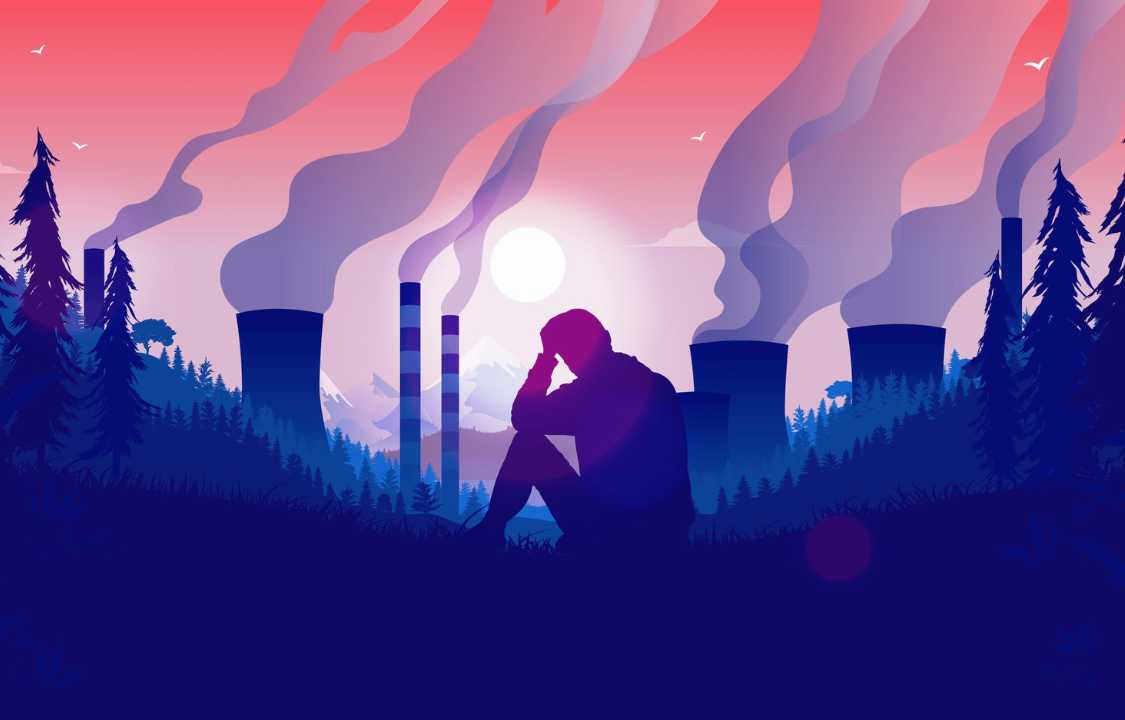Anxiety, Disorder, Mental Health
What Is Eco-Anxiety? How Climate Change Is Affecting Our Mental Health
The occurrence of natural disasters in 2020, such as typhoons, hurricanes, wildfires, and others, has raised concerns about the impact of climate change. These extreme weather events are becoming more frequent, and scientists are increasingly linking them to the effects of climate change.
During late October and early November 2020, the Philippines experienced the devastating effects of two powerful typhoons that caused widespread destruction. Prior to that, Australia faced severe bushfires that resulted in significant loss of forests, homes, and wildlife. In the United States, the summer of 2020 witnessed record-breaking heatwaves, hurricanes, a rare derecho in the central region, and destructive wildfires that painted the skies orange in the western part of the country.
The climate crisis we currently face is not only affecting the Earth’s ecosystems but is also causing a growing sense of unease and anxiety among people worldwide. While not a clinical diagnosis with a specific definition, mental health professionals have introduced the term “eco-anxiety” to describe the increasing sentiments associated with these environmental concerns.
Eco-Anxiety Definition
Eco-anxiety, as described by the American Psychological Association (APA), refers to a chronic fear of environmental devastation. It is a prevalent condition, with a recent APA poll revealing that 68 percent of US adults experience at least some level of eco-anxiety. Among individuals aged 18 to 34, about half report that climate change-related stress impacts their daily lives.
What was once considered a niche issue has now become more widespread due to the increasing occurrence of climate-related events. Climate change is no longer seen as a distant concern but as a pressing reality that affects people directly.
Eco-anxiety can have both acute effects, triggered by natural disasters, and chronic effects resulting from gradual climate change. These effects can impact mental health in various ways, including trauma, shock, post-traumatic stress disorder (PTSD), compounded stress, strained social relationships, depression, anxiety, suicidal thoughts, substance abuse, aggression, violence, loss of personally important places, loss of control and autonomy, loss of personal and occupational identity, as well as feelings of hopelessness, fear, or fatalism.
It is important to recognize and address the mental health implications of climate change, providing support and resources to individuals experiencing eco-anxiety.
Who Is Most Vulnerable to Eco-Anxiety
Not surprisingly, those experiencing the direct consequences of climate change—wildfires, superstorms, flooding—are especially vulnerable.
Scientists have long studied the psychological health effects of environmental disasters to know the mental health impact is very real. After Hurricane Katrina—the 2005 storm claimed over 1,800 lives—one in six survivors showed signs of post-traumatic stress disorder, suicidal ideation, and suicide more than doubled, and 49 percent of those living in an affected area developed an anxiety or mood disorder. Australia’s Black Saturday bushfires in 2009 left 15.6 percent of the affected community with symptoms of PTSD years after the fact.
“We’re going to continue to see climate catastrophes and tipping points,” says Doherty. “People have become more used to them, but these really super destructive [events] cause a lot of stress and anxiety.”
The climate crisis also disproportionately impacts communities of color, according to the United Nations, so they too may be at an even greater risk of eco-anxiety.
People of color in the US are more concerned about climate change than their white peers, according to a study by George Mason University’s Center for Climate Change Communication. The authors write the heightened worry is because “[people of color] are often more exposed and vulnerable to environmental hazards and extreme weather events.”
These hazards include but are not limited to, air pollution, flooding, hurricanes, and wildfires. Some of these environmental problems have been constant, multi-generational threats for communities of color. Take air pollution, for example. A 1999 IOM study found people of color are exposed to higher levels of pollution than their peers. More than two decades later, it’s still a harsh, inequitable reality: Studies have repeatedly shown Black and Hispanic communities are more exposed to air pollution than white communities.
To further compound the issue, communities of color tend to have fewer resources (e.g. infrastructure, access to healthcare, lower access to aid after climate-related disasters) to mitigate the effects of the climate crisis and deal with the aftermath of an environmental disaster.
What Can Help With Eco- and Climate Anxiety?
Climate change is a legitimate concern, and it is natural to experience anxiety in response to the threats it poses. Susan Clayton, an expert in climate anxiety, highlights that a certain level of anxiety can be beneficial as it alerts us to the seriousness of the issue. Anxiety serves as a signal that prompts us to pay attention and take action.
To alleviate anxiety related to environmental doom, it is important to shift the dialogue and implement policies aimed at mitigating climate change. Creating greater awareness and acceptance of climate change, along with international efforts to address it, can help alleviate anxiety by providing a sense of collective action.
During the Trump administration, environmental protection measures were weakened or rolled back, contributing to heightened concerns. However, it is important to recognize that addressing climate anxiety requires more than just government action. Individual approaches to managing anxiety may vary, from seeking more information to reducing exposure to distressing news. Engaging with local activist groups, communicating with local politicians, and taking personal actions can help regain a sense of control and contribute to positive change.
Ultimately, it is crucial to remember that the dysfunctional situation lies in the environmental challenges we face, not in the individuals experiencing anxiety. By collectively taking steps to protect our planet, we can make a meaningful impact and work towards a sustainable future.

